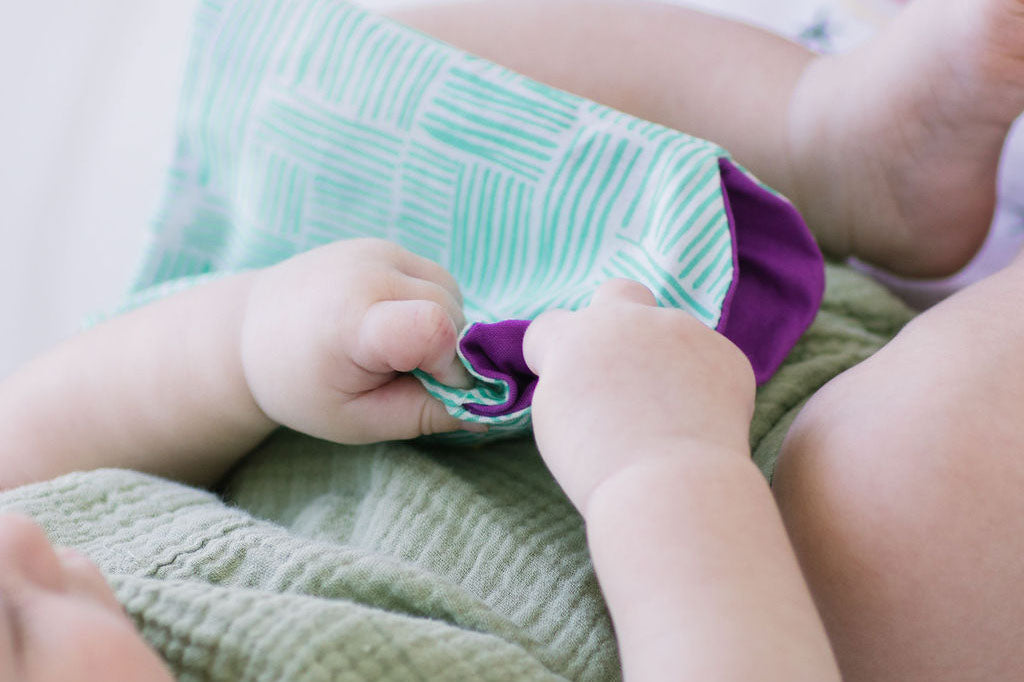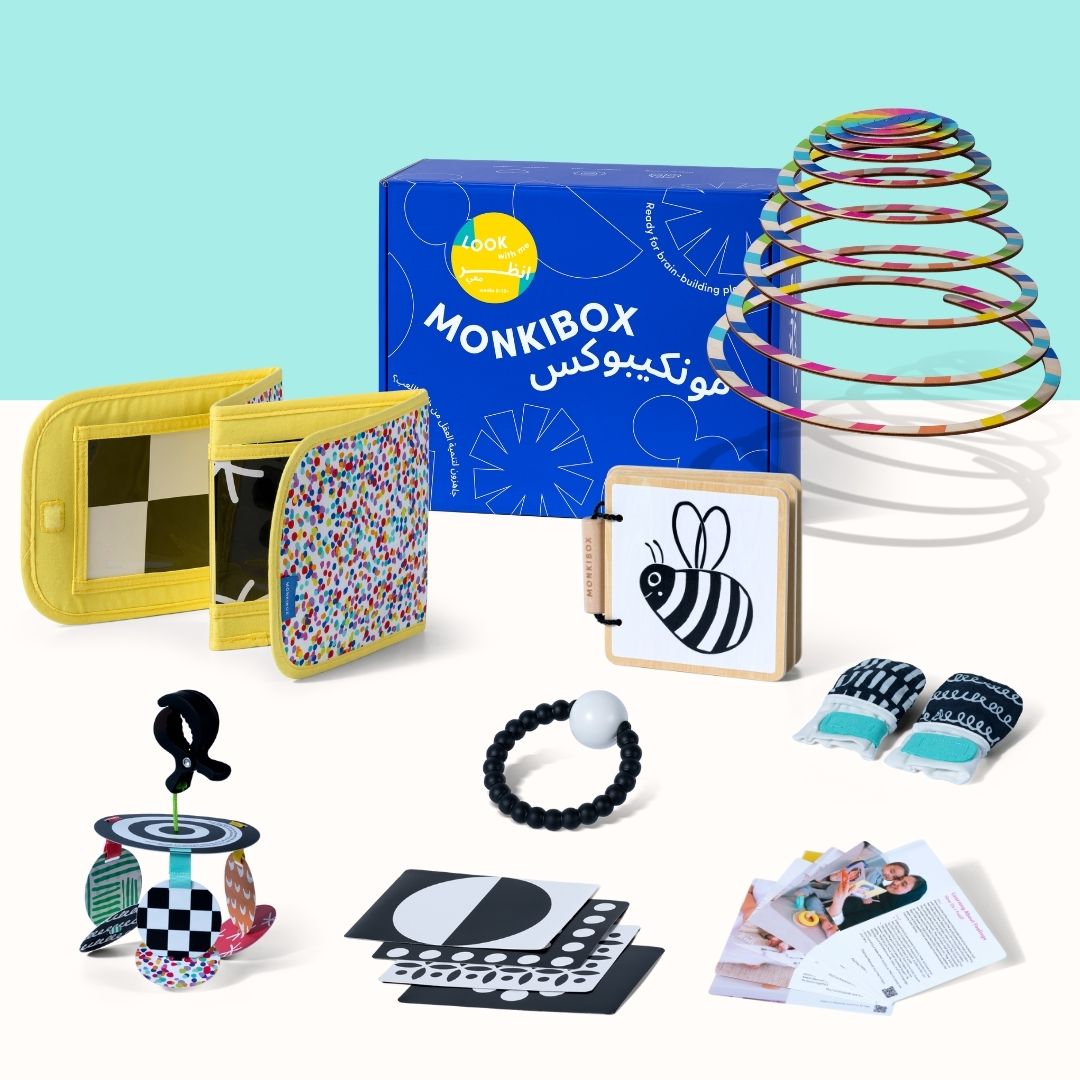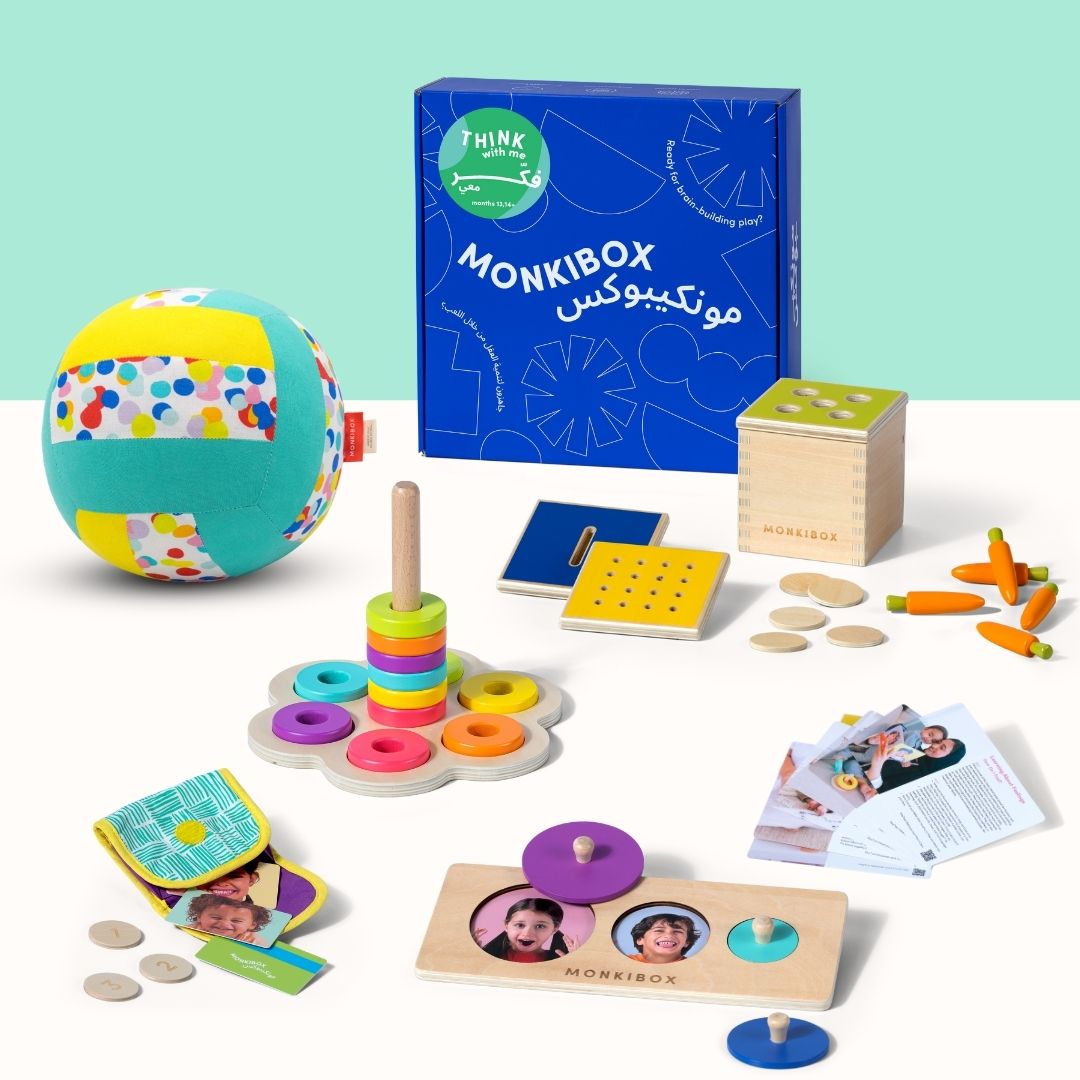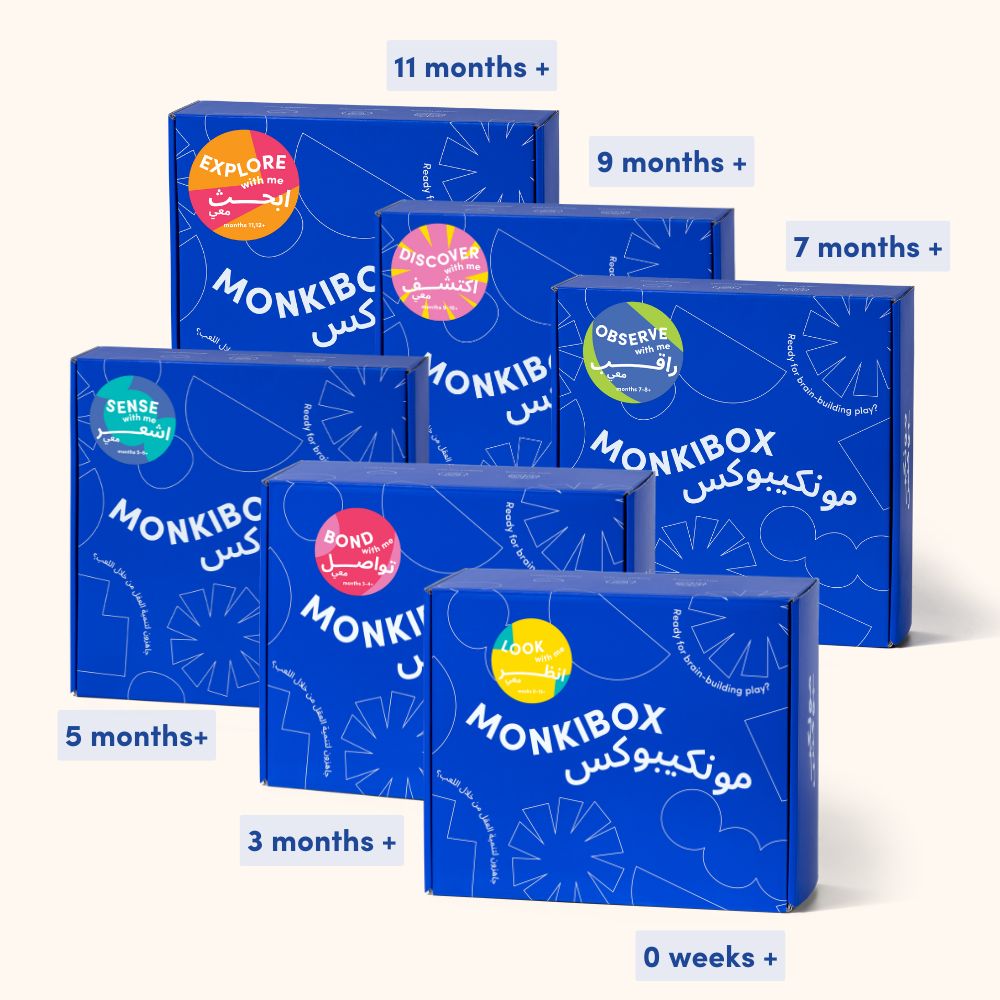The ultimate aim of reaching out to something is to grab hold of it. So grasping is often the next motor development milestone your baby will be achieving once he is more confident in his reaching skills. And once they fully mastered grasping (around 9-10 months), you can expect them to experiment with throwing - watch out, mama!

Here is a breakdown of the different stages of grasping and when you can expect to see them or encourage them:
4 months: Your baby will be able to hold an object you give him and gently wrap one or two of his fingers around it (usually his little and ring finger).
This is called the ulnar palmar grasp. He won't use his thumb yet, and he won't have a firm grip or control, so it may roll away from him, or he might hit himself with it.

5 Months: By now, your baby has a little more control of the object and tries to center it in the palm of his hand by wrapping more fingers (still not his thumb) around it. This is called the palmer grasp.

6 Months: Your baby will finally start using his thumb when holding an object (the Radial Palmar Grasp), although it will still be more of a support than part of his actual grip.

7 Months: Around seven months, your baby will try to pick up objects using his hand like a rake, aptly named the raking grasp. Your baby's fingers will be spread out as he reaches for an object but will close around the object once he touches it.
This will also help strengthen the muscles in his hands and further finetune his hand-eye coordination.

8 Months: As a precursor to the pincer grasp (using your forefinger and thumb), your baby will first develop his radial digital grasp. It still lacks the refinement to pick up small objects, but your baby will now try to pick up an object using the pads of his thumb and other fingers.

Pediatricians call it a transitional stage that helps babies prepare for the pincer grasp. At this stage, the control over the thumb is still not fully refined. As babies continue to practice and develop their fine motor skills and hand-eye coordination, they gain more precise control over their thumb and forefinger, leading to the pincer grasp.
At 9 months, the pincer grasp typically develops. Your baby will start practicing using their thumb and forefinger to pick up small objects with much greater precision. This marks the beginning of fine motor control, which is important for tasks like self-feeding and picking up tiny objects like Cheerios or beads. (source) (source)
In case you were wondering, the pincer grasp refers to the ability to pick up small objects using the tips of the thumb and forefinger. This is distinct from other types of grasps. You see, while the ulnar and palmar grasps rely on the whole hand (and sometimes just the pads of the fingers), the pincer grasp uses the thumb and forefinger in a more coordinated, precise manner, allowing babies to handle small items more effectively.Start the development journey with MonkiBox. Montessori-inspired toys designed to give your child the best start.





